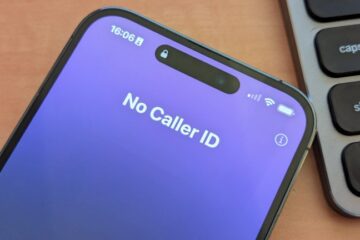Several Cases for the Need for an Automated Testing Solution

To rapidly deploy updates, the vast majority of businesses rely on continuous integration and release. These objectives can only be met if code changes can be tested automatically against the existing system. Testing automation may be advantageous in this situation. By automating your testing, you can ensure that new code does not fail or cause unexpected problems. Your CI/release process will be more efficient, and errors that affect customers will occur less frequently. Without automated testing solutions, continuous integration and releases are inoperable.
Why Is It Beneficial?
It is widely acknowledged that incorporating new code changes and publishing new updates is the best way to keep a codebase in good shape. As a result, users have quicker access to new features and bug fixes. Many organizations struggle to keep their CI/CD pipelines running smoothly. The use of automated testing can effectively address this issue. Only after extensive testing can new code updates be added to the master branch. This speeds up development while decreasing the likelihood of flaws making it into the final product. As a result, it is an excellent solution for businesses that want to maintain a high-quality codebase while also delighting customers.
The Benefits
Automated testing is essential in pipelines for continuous integration and delivery. By automating the testing process, software products can be tested more thoroughly and quickly, saving both time and money. The following are additional reasons to use automated testing methods:
One of the primary benefits of automated testing is that it reduces the time required to deliver new software upgrades.
Businesses can improve accuracy by automating repetitive operations, which reduces test results and human error.
Businesses can save money by using automated testing to reduce the amount of time spent on manual testing. Organizations can also save money by reusing test scripts across multiple projects.
Coverage of tests: Organizations can increase test coverage with automated testing to achieve more comprehensive results.
A company can improve the effectiveness and efficiency of its software development cycles by using test automation. Firms can save time and money by using automated testing while maintaining product quality. You must automate testing if you want to improve software development.
The future of automated testing appears promising. As previously stated, it has numerous advantages for pipelines. By automating your tests, you may be able to improve their quality and reliability. As a result, test automation will almost certainly become more important in the future development process. There are several ways to prepare for this shift. Before you begin, double-check the clarity and quality of your testing. Second, think about using an automated testing program. Keep up with the latest advancements in test automation to be among the first to use new features and methods.
For many years, QualityLogic’s test experts have developed and implemented innovative test automation solutions. We assist our clients in maintaining a competitive advantage by automating tests. We identified the best areas for automation testing and collaborated with a large number of clients to prevent excessive manual testing from slowing down the software development life cycle. For more information, please see our website.
Why Is Digital Content Access so Important?
Disability is defined as “an umbrella term that encompasses impairments, activity constraints, and participation restrictions” by the World Health Organization. Disabilities can include problems with physical, sensory, cognitive, intellectual, or behavioral health. Disability is one of the most common health problems, affecting an estimated one billion people worldwide. Despite this, people with disabilities frequently face significant difficulties in gaining access to school, employment, and other essential services.
One way to overcome these challenges is to ensure that everyone has access to digital content and services. A component of this is the development of websites and software that can be used by people with various disabilities, such as those who are blind or have low vision, are hard of hearing, or have cognitive or intellectual issues. By making digital content and services more accessible, we can help people with disabilities overcome some of the barriers they face and live full, inclusive lives.
Methods for Individuals with Disabilities to Navigate Digital Content
People with disabilities face a number of challenges when navigating digital information. Individuals with low or no vision, for example, may require screen reader software to convert text to speech. Individuals who are deaf or hard of hearing may require captions or transcripts to access audio and video content. People with cognitive impairments may require less subject matter presented. Individuals with physical limitations may also require content that can be accessed through alternative input modalities, such as switches or eye-gaze sensors. Taking these various requirements into consideration allows website designers and developers to create digital content that is accessible to a larger audience.
Designing for the Blind and Visually Impaired
It is critical to recognize when creating digital content that not everyone sees the world in the same way. People who are blind or have poor vision, for example, rely on specific cues to absorb information. Additional factors must be considered when creating digital content for them. Text descriptions of photographs, for example, should always be different. A video must also include audio descriptions and closed captioning. You can ensure that all users have access to your digital content by following these rules.
Designing with the Deaf in Mind
When creating digital content, all potential viewers’ needs must be taken into account. This includes people with disabilities who have difficulty understanding traditional types of content. Deaf and hard-of-hearing people, for example, can receive digital information through closed captioning.
When creating digital content with closed captions, there are a few things to keep in mind. To begin, captions should be easy to read and comprehend. This includes using large letter sizes and avoiding difficult-to-read typefaces, such as ornate typefaces. The audio track and subtitles must also be synchronized. This can be accomplished by either manually creating subtitles or manually transcribing the audio track while using software that generates captions automatically. Finally, it is critical to thoroughly check the captions for errors.
Follow these guidelines to create digital content that is accessible to all users, regardless of disability. To make your video more accessible, you can include audio description and sign language interpretation in addition to closed captioning. It is possible to create digital content that appeals to all viewers by considering their needs and increasing their digital accessibility.
Learn more about QualityLogic and our digital accessibility tools by clicking here.














